A series of disasters
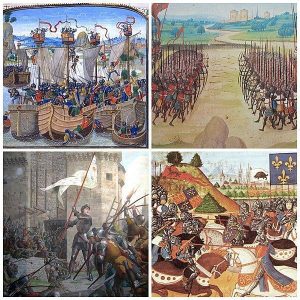 Hundred Years War (1337-1453)
Hundred Years War (1337-1453)
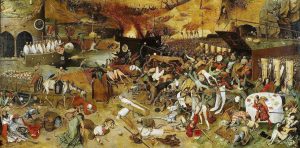 "The Triumph of Death" by Pieter Brueghel the Elder, 1562
"The Triumph of Death" by Pieter Brueghel the Elder, 1562
The West was devastated by a series of disasters:
- The Hundred Years war ending in 1453,
- the black plague ravaging Europe from 1346 to 1353 (25 million deaths) and sporadically returning, especially in Venice in 1478,
- the capture of Constantinople by the Ottoman Turks in 1453, heralding the fall of the Eastern Roman Empire – Byzantine Empire –, the West did not come to its rescue.
Many are troubled by the fear of death and the concern for salvation. Both themes were illustrated in churches with dances of death and portrayals of the last judgement. Worshippers turned to the Virgin and the saints, each granting a specific protection, such as saint Roch, saint Gilles and saint Adrien against the plague.
The belief in purgatory, an intermediate space between Heaven and Hell, drove the Church to grant indulgences to shorten the stay.
New ideas spread thanks to printing
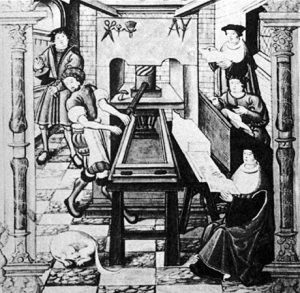 One of the first printing houses © S.H.P.F.
One of the first printing houses © S.H.P.F.
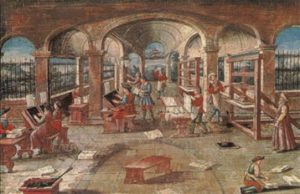 Printer's workshop, 16th century
Printer's workshop, 16th century
Christopher Columbus discovered America in 1492, thus opening new views on the representation of the world, and promoting maritime trade.
The Renaissance appeared in Italy after 1493 and revolutionized the art world.
The humanist movement developed at the same time and triggered interest in antiquity, notably texts in Greek and Hebrew, specifically those of the Bible.
The development of printing by Gutenberg in 1450 enabled mass distribution of ideas in vernacular languages at much more affordable prices than manuscripts.
A discredited clergy
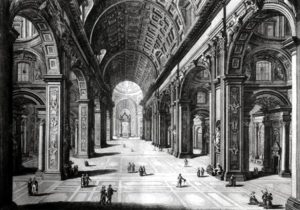 Intérieur de la Basilique St Pierre à Rome
Intérieur de la Basilique St Pierre à Rome
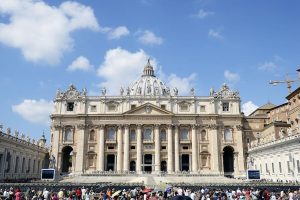 Saint Peter's Basilica in Rome (Italy)
Saint Peter's Basilica in Rome (Italy)
Priests were destitute and poorly educated, while the upper clergy generally lived in luxury thanks to their income from ecclesiastical offices. Many bishops did not live in their dioceses and relied on vicars general. Many were drawn into political life and entered royal service.
Monasteries were numerous but the breakdown of discipline and morals undermined their prestige.
After the Great Western Schism the image of the papacy suffered, because of the quarrels of several popes between 1378 and 1417, Church councils took precedence over the papacy as proclaimed at the Constance Council. The Papacy was also periodically rocked by conflicts between the popes and the sovereigns in the west.
At the Renaissance period patronage for the arts developed. The popes also participated, Jules II employed Michelangelo for instance. But it was very expensive. The Church needed money, especially to have the Saint Peter basilica built in Rome, so indulgences were sold, which scandalized Luther.
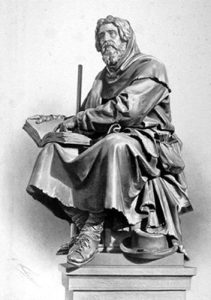 Pierre Valdo (1140-1217)
Pierre Valdo (1140-1217)
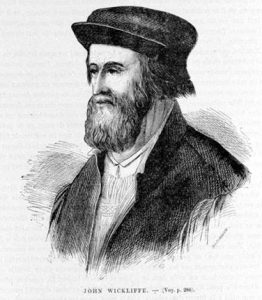 John Wyclif (circa 1328-1384) © S.H.P.F.
John Wyclif (circa 1328-1384) © S.H.P.F.
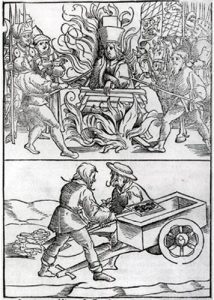 Execution of Jan Hus and scattering of the ashes © Collection privée
Execution of Jan Hus and scattering of the ashes © Collection privée
Over this two-century long period many voices were heard calling for a reformation of Churches, also among the clergy, but they were left unanswered.
To preserve its authority, the Church preferred to condemn. It attacked its most vehement critics, such as the Waldensians, Wyclif, or Jan Hus. A few attempts at reform failed, mainly because of authority rivalry between the pope and the councils. The Latran Council (1512-1517) was confronted to with pope Leon X’s indifference.
It was not until the Reformation spread, after 1517, that the Church began to reform itself from within – such was the achievement of the Council of Trente (1545-1563).